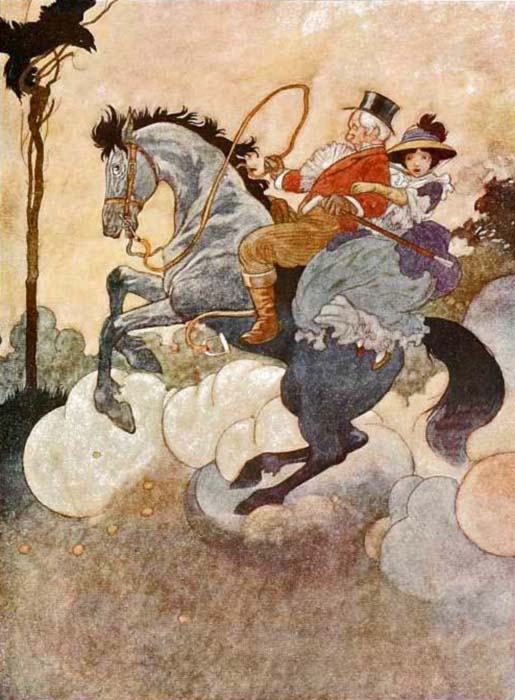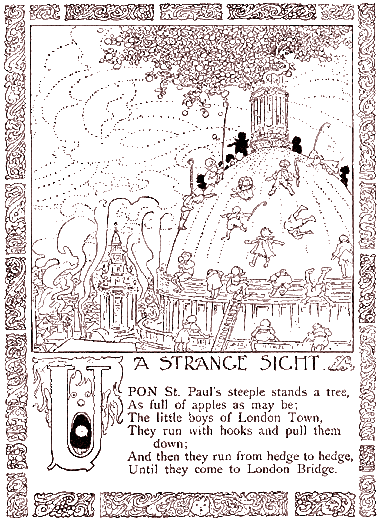A Strange Sight
Upon St. Paul’s steeple stands a tree,
As full of apples as may be;
The little boys of London Town,
They run with hooks and pull them down;
And then they run from hedge to hedge,
Until they come to London Bridge.

Origin
This short rhyme was recorded in James Orchard Halliwell’s The Nursery Rhymes of England during the mid-19th century. Halliwell collected many street verses tied to London landmarks, and this one links St. Paul’s Cathedral with London Bridge in a playful, impossible image.
 The rhyme has no hidden moral. Its humor comes from absurdity: no tree could grow on the steeple of St. Paul’s. That very impossibility is what made it memorable. For London children, the thought of scrambling for apples high above the city was pure fantasy. The boys’ mischief with “hooks” to snatch fruit reflects a real habit of stealing apples from orchards — an experience familiar to children in the 19th century. Ending the chase at London Bridge grounds the nonsense in a place every child knew by name.
The rhyme has no hidden moral. Its humor comes from absurdity: no tree could grow on the steeple of St. Paul’s. That very impossibility is what made it memorable. For London children, the thought of scrambling for apples high above the city was pure fantasy. The boys’ mischief with “hooks” to snatch fruit reflects a real habit of stealing apples from orchards — an experience familiar to children in the 19th century. Ending the chase at London Bridge grounds the nonsense in a place every child knew by name.
Cultural Background
This is one of many “London rhymes” where landmarks become the stage for children’s imagination. In the same collections, Halliwell preserved quick verses about Cheapside, London Bridge, and other city spots. Such rhymes were likely recited in games, skipping, or street play.
Like other nonsense jingles, St. Paul’s Steeple belongs less to moral instruction than to sheer amusement. It shows how nursery lore often took familiar places and filled them with impossible sights, making the city itself part of the children’s playground of words.